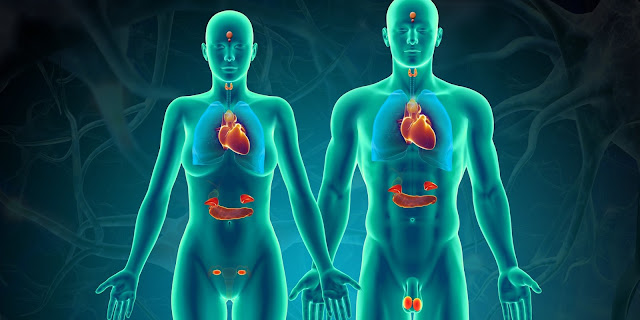Latest Updates on Gaucher Disease Treatment Options
 |
| Gaucher Disease Treatment |
What is Gaucher Disease?
Gaucher disease is a rare inherited disorder that affects certain cells in the body
called macrophages. Macrophages are a type of white blood cell that helps fight
infection and keeps tissues healthy. In people with Gaucher disease, a fatty
substance called glucosylceramide builds up inside macrophages in certain
organs and tissues, including the liver, spleen, bone marrow, and sometimes the
lungs or brain. There are three main types of Gaucher disease - type 1, type 2,
and type 3 - based on whether the person has neurological symptoms and the
severity of symptoms.
Types of Gaucher Disease:
Type 1 Gaucher Disease: This is the most common type. People with type 1
Gaucher disease don't have neurological symptoms. Symptoms may include enlarged
spleen and liver, low blood cell counts, bone problems like joint pain and
fractures.
Type 2 Gaucher Disease: This is the most severe type and is a neurological form
of Gaucher disease. Symptoms usually appear before age 2 and progression is
very rapid. Symptoms include rapid enlargement of the liver and spleen, lung
disease, severe brain dysfunction, and death usually occurs by age 2.
Type 3 Gaucher Disease: This type has a variable presentation in between type 1
and type 2. Neurological symptoms develop later than in type 2 usually after
age 2. Progression is slower than type 2 but faster than type 1. Organ
involvement such as liver and spleen enlargement is also seen.
Gaucher Disease Treatment Options:
Enzyme Replacement Therapy: Enzyme replacement therapy (ERT) provides the
missing or deficient enzyme that is not working properly in Gaucher
Disease. Three drugs are available for ERT - alglucerase (Ceredase),
imiglucerase (Cerezyme), and velaglucerase alfa (Vpriv). These drugs are
infused intravenously every 2 weeks and help reduce organ enlargement and
improvement in blood cell counts. ERT does not treat neurological symptoms.
Substrate Reduction Therapy: Substrate reduction therapy uses a drug called
eliglustat (Cerdelga) which is taken orally to reduce the amount of substrate
that builds up in Gaucher cells. This helps reduce organ and spleen size and
improve blood cell counts. It is only FDA approved for adults with type 1
Gaucher disease.
Bone Marrow Transplant: A bone marrow transplant replaces the person's diseased
bone marrow with healthy donor bone marrow. It can potentially cure type 1
disease but due to risks, it is only considered for severe symptomatic type 3
disease without effective ERT or when ERT has failed. Success depends on donor
matching and age of the patient.
For bone disease, additional treatments like bisphosphonates may be used.
Physical and occupational therapy can help improve mobility and prevent further
bone problems. Splenectomy may be considered in severe splenomegaly. Careful
monitoring by a medical team is needed.
Clinical Trials for New Gaucher Disease
Treatment Options:
Several new drugs and techniques are being evaluated in clinical trials for
better treatment of Gaucher disease:
- Venglustat: An oral substrate reduction therapy similar to eliglustat but may
have fewer food interaction issues. Phase 3 trials are underway.
- Arimoclomol: Acts by stimulating heat shock proteins to help damaged cells.
Phase 2 trials showed reduction in spleen and liver volumes.
- Gene Therapy: Still in preclinical testing, aims to deliver corrective gene
directly into patients' cells through vectors to provide long term effects.
- Antisense Oligonucleotides: Uses synthetic anti-sense RNA strands that bind
to messenger RNA involved in pathogenic processes and modulate gene expression.
Phase 1/2 trials ongoing.
- Stem Cell Therapy: Use of gene-corrected stem cells from patient's own bone
marrow or cord blood through transplantation aims to permanently correct the
genetic defect. Early research phase.
- Telotristat Etiprate: Reduces production of substrate that accumulate in
Gaucher cells, in addition to approved therapies. Approved for neuroendocrine
tumor symptoms. Studies in Gaucher disease.
In summary, gaucher disease treatment has advanced significantly over the last
few decades. Enzyme replacement therapy is the standard treatment for type 1
Gaucher disease and provides considerable benefit. Substrate reduction therapy
is also available. However, new promising treatment options through targeted
gene modulation or gene therapy may potentially provide cure in future through
a single treatment course. Careful monitoring and multidisciplinary care
approach is important for optimal outcome.
Get more
insights on Gaucher
Disease Treatment
About Author
Priya Pandey, is
a dynamic and passionate editor with over three years of expertise in content
editing and proofreading. Holding a bachelor's degree in biotechnology, Priya
has a knack for making the content engaging. Her diverse portfolio includes
editing documents across different
industries, including food and beverages, information and technology,
healthcare, chemical and materials, etc. Priya's meticulous attention to
detail and commitment to excellence make her an invaluable asset in the world
of content creation and refinement.
(LinkedIn- https://www.linkedin.com/in/priya-pandey-8417a8173/)



Comments
Post a Comment